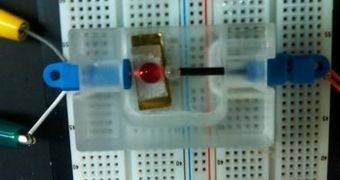Scientists at the Arizona State University announce the development of a instrument, that is especially suited for assisting healthcare personnel in establishing diagnostics with great accuracy.
The tool itself is fairly simple to use and cheap, as ASU experts Antonia Garcia and John Schneider and their team developed it for large-scale applications, including in the developed world.
The two say that the innovative device is capable of checking biological samples for signs of infectious diseases, or for unhealthy levels of specific proteins.
Being able to do so could mean the difference between life and death in thousands, if not millions of cases around the world, the ASU crew believes.
The new tools work with all sorts of biological fluids, ranging from blood to saliva and urine, which makes it extremely versatile. The diversity of accepted samples may help circumvent problems associated with harvesting sterile samples from patients.
While this is generally not a problem in western countries, nations in Africa or elsewhere in the world do not benefit from such luxury.
Bodily fluid samples “are complex mixtures that require sophisticated instruments capable of mixing a sample with antibodies or other biological reactants to produce an accurate positive or negative reaction,” says Garcia.
The expert, who is a professor in ASU Ira A. Fulton Schools of Engineering (FSE) School of Biological and Health Systems Engineering, says that this is one of the main reasons why existing diagnostics devices are so slow and expensive.
Underlying the new diagnostics method are simple and cheap light-emitting diodes (LED), as well as basic microeletronic amplifiers, the team says.
“I’m excited about the potential for this device, and that students can be directly engaged in the research and development process,” says ASU nanotechnology expert Manuel Marquez.
“I’ve devoted more than a decade of my career to enabling engineers and scientists to rapidly apply their basic discoveries to solving real-life problems,” he adds.
The collaboration published details of the new tools in the latest online issue of the respected scientific journal Nature Precedings.
The research paper is entitled “Rapid antigen detection using the liquid sample as a lens and self-mixer for light scattering detection,”” the ASU group concludes.

 14 DAY TRIAL //
14 DAY TRIAL //